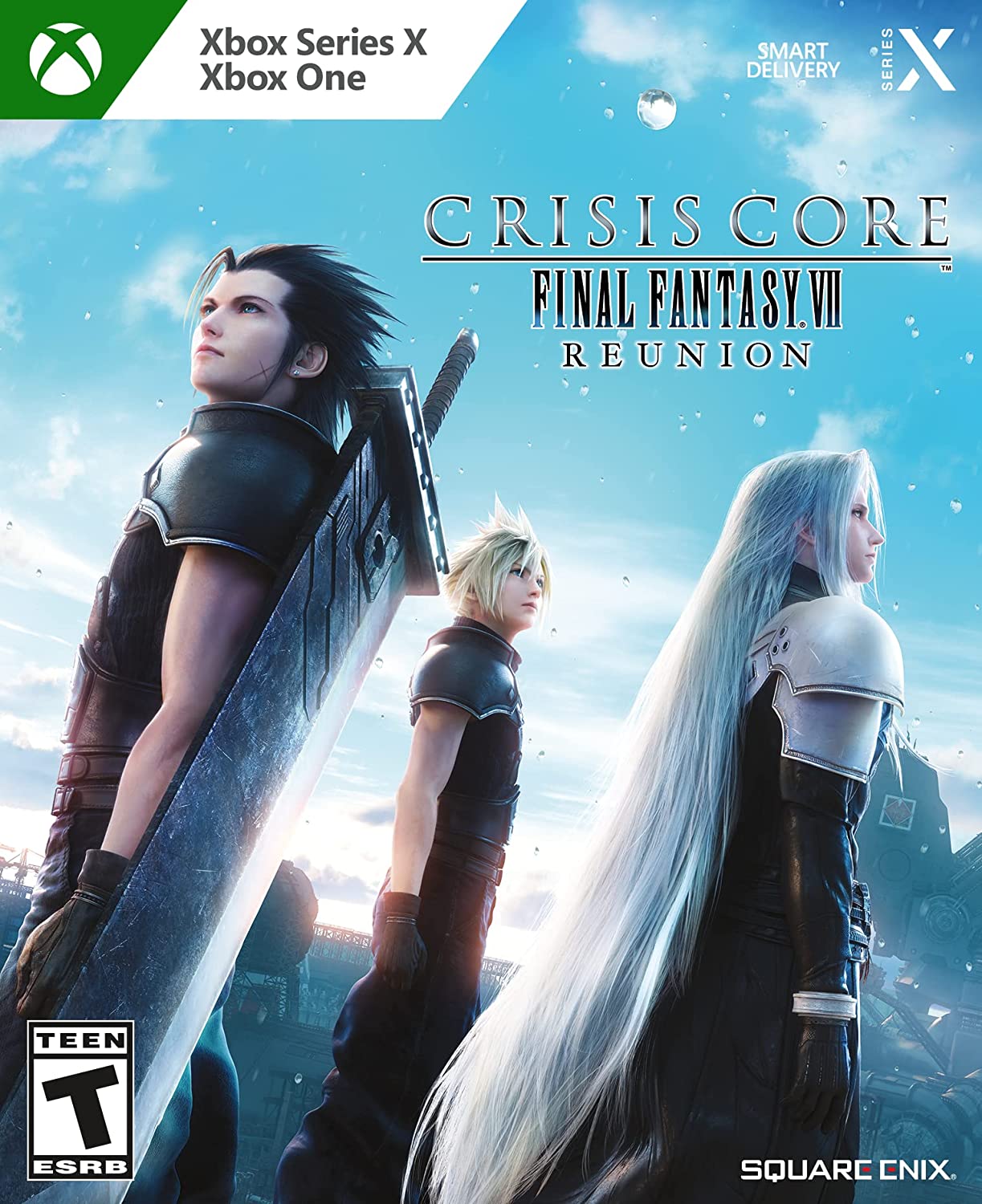Crisis Core -Final Fantasy VII- Reunion
Developer: Square Enix
Publisher: Square Enix
Platforms: PlayStation 4, PlayStation 5 , Xbox Series X (Reviewed), Xbox One, Switch, PC
Release Date: Available Now
Price: $49.99 USD – Available Here $89.95 AUD – Available Here
Overview
Over the years the line between a remake and a remaster has blurred. While there are simple remasters that simply bring a game to modern consoles with barely any upgrades other remasters have taken the original and improved it in almost every possible way. With Square Enix’s handling of Crisis Core -Final Fantasy VII- Reunion this line is almost non-existent as the company has taken this 2007 PSP game and revamped most aspects of the title through graphical upgrades and technical changes to some gameplay mechanics. Were their efforts successful or is this prequel of an action RPG best left in the past?
Story
Set seven years before the events of Final Fantasy VII, Crisis Core -Final Fantasy VII- Reunion follows the story of Zack Fair, a 2nd Class member of SOLDIER who has dreams of becoming a hero and looks up to his friend and mentor 1st Class soldier Angeal. He is jealous that Sephiroth is often given the spotlight as the greatest hero that SOLDIER has ever seen and does his best to train and get promoted to a 1st Class fighter like the rest, not batting an eye at any of the missions that Shinra sends him on even if it involves invading the land of Wutai and eliminating everyone he comes across.
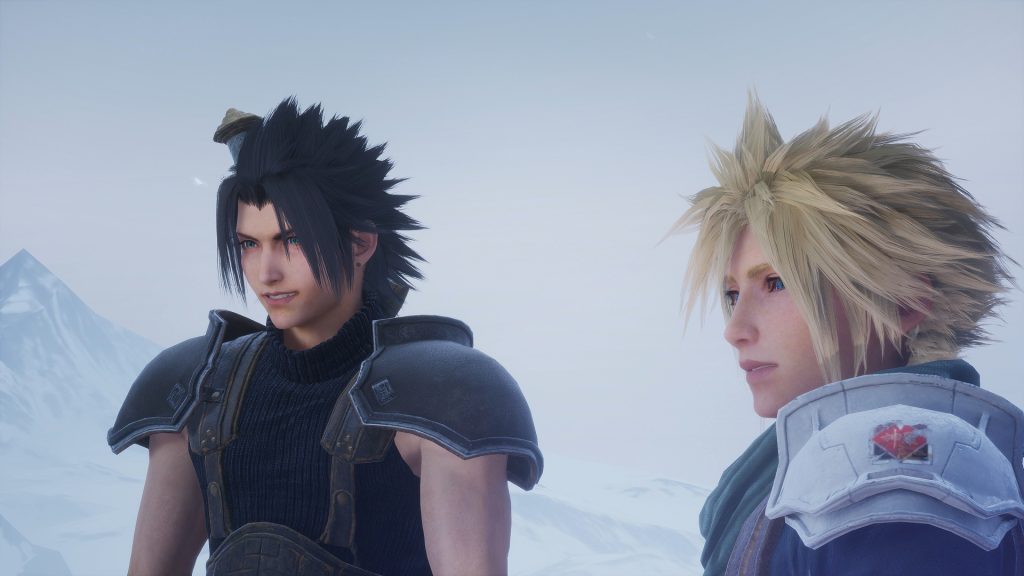
His hopes of becoming the best Shinra has ever seen begin to waver as other members of SOLDIER begin to go rogue and turn against the company and things begin to grow ever darker as more elements involving Shinra’s shadier elements begin to come to light. As the story progresses through its ten roughly hour long chapters players will watch Zack go from a starry eyed fighter to a more serious and troubled character as he experiences numerous losses, betrayals, and more all while interacting with numerous familiar faces that appear in the main game. Of course, the game isn’t all dark and dreary as it takes plenty of opportunities to work in some eye-rolling humor, some emotionally touching moments, and odd mood swings that feel like the perfect epitome of mid-00s writing.
Crisis Core -Final Fantasy VII- Reunion continues to work quite well as a prequel to at least most of the events that happen in Final Fantasy VII as it gives some great characterization to both Zack as well as Sephiroth before he turned into the villain that everyone is familiar with. It also details quite a lot of the preceding events and some of the most dramatic moments that appear as memories in the base game. That being said, it is worth noting that this story has not been changed in any way. This means that those who have played the original will already know everything that happens in Crisis Core -Final Fantasy VII- Reunion and while this is great for purists and those who may never have played the original despite being fans of the classic Final Fantasy VII, it does mean that certain things may not quite line-up with how events might play out in Square’s latest efforts with VII’s story. Regardless, this story remains a great expansion to the lore of the series and gives some exceptional background to many characters and features numerous moments that fans of Final Fantasy VII will certainly enjoy.
Gameplay
At its core many elements of Crisis Core -Final Fantasy VII- Reunion still hold fairly true to its portable origins. Most combat encounters and almost all missions are designed to be small encounters that often only take a few minutes at a time. Even story missions feature battles that are spaced out with frequent save points in-between to make sure that players always have a place to stop should the need arise. It also happens to feature a fairly large number of random mini-games that appear throughout story missions that try and change things up a bit by introducing a random new mechanic that is immediately thrown away and end up being incredibly forgettable.
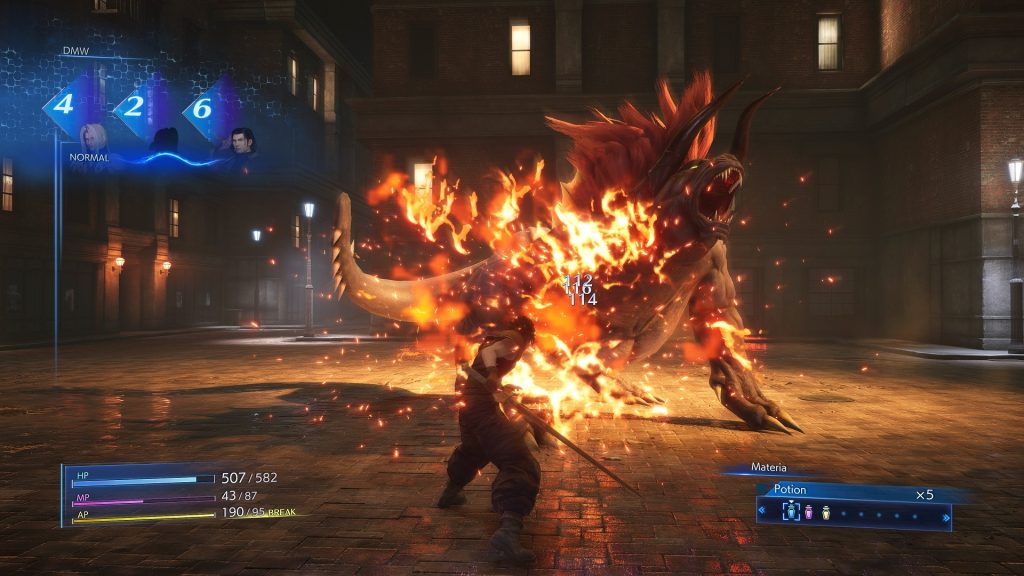
Battles in the game happen in real time with a focus on action as players always have a standard combo attack available to them at all times, revamped button mapping that allows for easier blocking and dodging, and the ability to swap between and use items on the fly. It also allows for quick use of any of the many Materia that players will have equipped, with four being the initial offering before players quickly unlock the ability to use six at a time. Materia that are used in combat make use of either MP for spells or AP for active attacks though there are also a number of Materia that can be equipped to either boost Zack’s abilities, health, mana, or AP, and offer a number of other improvements.
In fact, players will often find themselves with so many Materia that they may feel a bit overwhelmed with the amount available to them. Thankfully not only can players actively swap what Materia they have equipped in the middle of a mission they can also use Materia fusion to craft even stronger attacks and buffs. Fusing “Mastered” Materia will often result in a more powerful version of that skill being available such as Fira being upgradeable to Dark Firaga if fused with a proper skill or, should players wish, potentially unlock far stronger skills earlier than they usually would become available. This opens up quite a lot of possibilities that make for some exciting combinations, especially once players begin to equip accessories that remove the limiters placed on health, damage, etc.
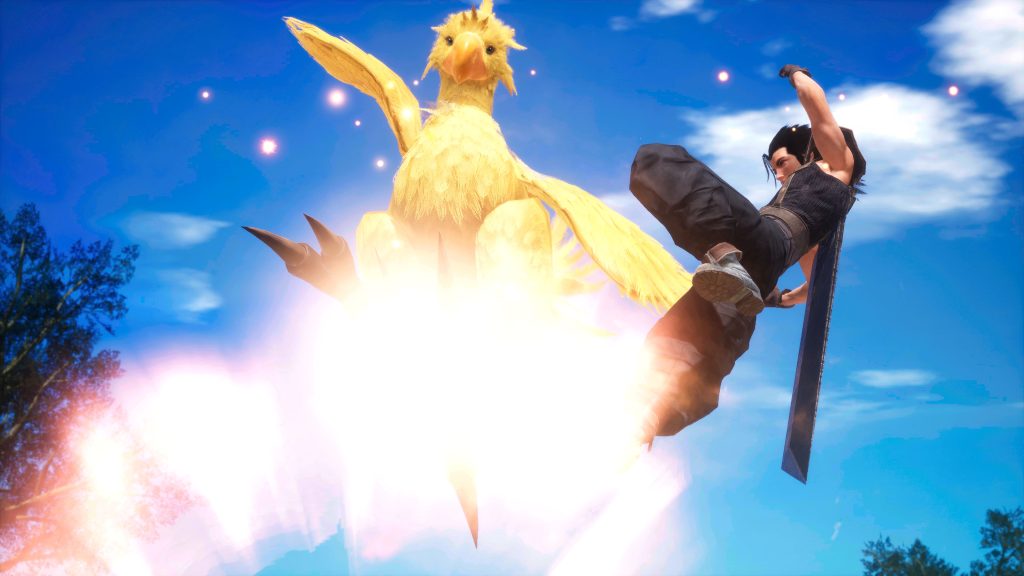
This emphasis on customization makes for a number of interesting elements in combat but perhaps the most interesting comes from the Digital Mind Wave, or DMW. The DMW works as a literal slot machine that is constantly spinning in the top left of the screen as long as players are fighting in a battle. The spinners feature character pictures and numbers and depending on how the slots land, players may receive a number of buffs or be able to execute powerful attacks. Shouild three of a character’s image appear, not only will Zack restore some of his health, AP, and mana but also gain the ability to use powerful Limit Breaks or Summons that have various effects of their own such as dealing tons of damage, healing or buffing Zack, and even upgrading every Materia he owns. The numbers also play a factor as they can provide a number of buffs ranging from making all AP/MP attacks free of cost, making Zack temporarily invincible, or straight up leveling Zack in the middle of a fight.
The randomness of the DMW makes almost every fight something of an unknown since players may fight against a number of generic foes with zero buffs one time only for Zack to level up and finish everything off with a blast from Bahamut the next with no actual difference. Along these same lines, there can be boss battles that can be completely trivialized due to a Summon triggering randomly and since players have the option to immediately restart a fight should they fall in battle, even having the opportunity to change their equipment should they choose, players will find that the game’s only true challenge comes from tackling a Mission earlier than they should.
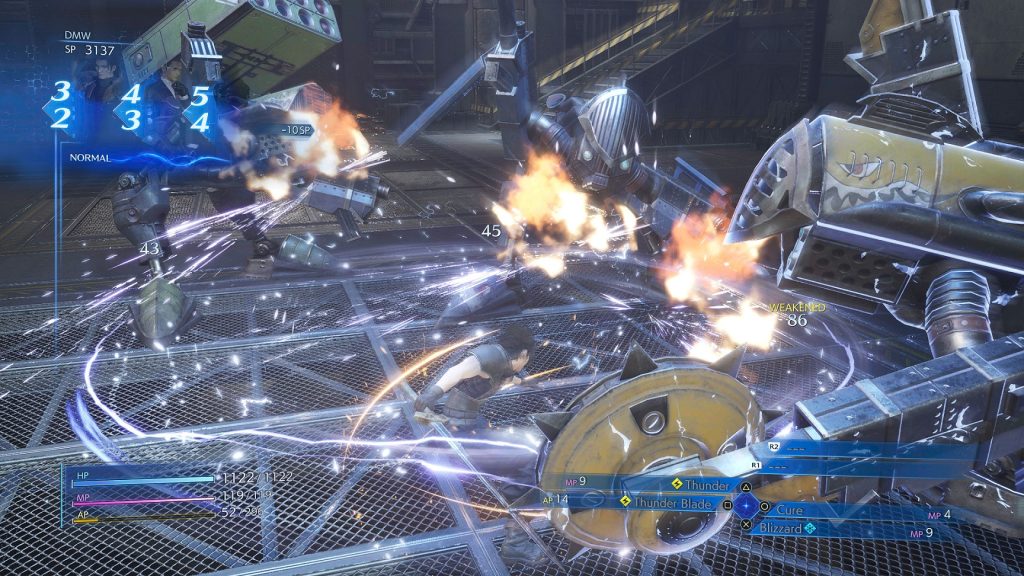
Now, these “Missions” end up making up the bulk of the game and also exhibit some of the game’s most obvious portable holdbacks. Missions can be undertaken at any save point, including those found in the middle of a story chapter, and feature a massive amount of rewards should players complete them. Sadly, a lot of these rewards are absolutely useless but players must complete these to reach ones that offer truly valuable items including those that allow them to equip more accessories or unlock new Summons to appear on the DMW. These Missions all make use of a handful of generic looking stages that can be completed within a few minutes and almost always involve some minor exploration through halls with random battles and hidden treasure chests before facing off against the target to complete the actual Mission. The fact that these are bite size challenges doesn’t stop them from being incredibly repetitive and the fact that some feature great rewards is something of an annoying drawback and it would have been nice to see them expanded in some form beyond the limitations imposed from the PSP.
Visuals & Audio
It must be said that Square Enix has put a lot of effort into making most of Crisis Core -Final Fantasy VII- Reunion look as outstanding as possible. Nearly all of the game’s character models have been given a complete overhaul to look as impressive as possible while the environments that players fight through are nicely detailed, if a bit too repetitive when it comes to the game’s missions. The game is at its best during combat where spells and combat techniques are visually impressive and the various summons that players can unleash are outstanding looking and a real treat whenever the DMW makes one available for use. It is worth noting that not every aspect has transitioned well as the game’s cinematic cutscenes are a bit on the rougher side as it appears that these have not been given any actual touch-up other than a minor up-res from their PSP versions, making them noticeable downgrades from what players are used to seeing throughout the game.
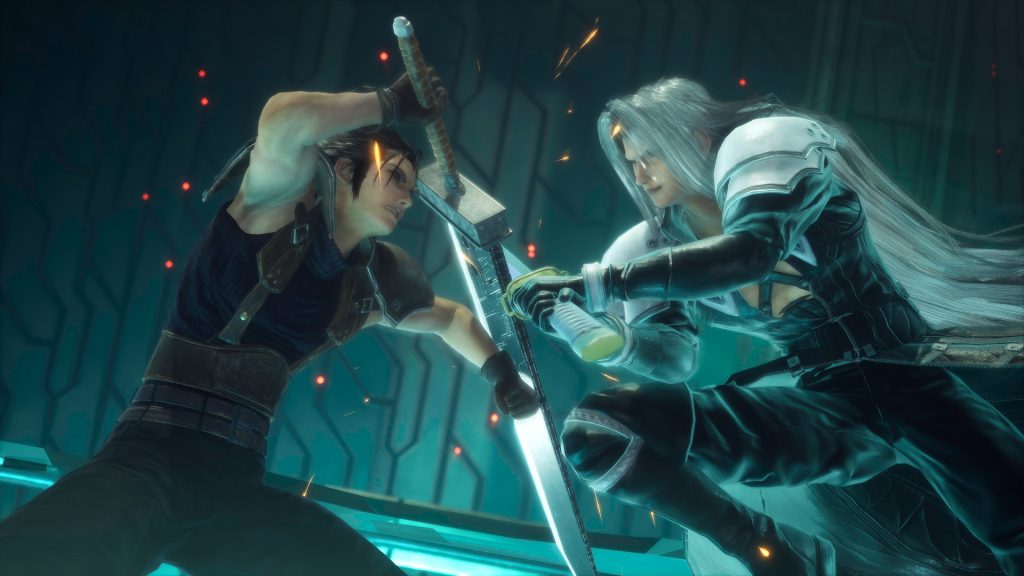
The English voice cast for Crisis Core -Final Fantasy VII- Reunion has been completely revamped with all of the voices of familiar characters being replaced with the voice actors who handled the same roles in Final Fantasy VII Remake. While this isn’t an issue for most of the cast, the new English voice actor for Zack is downright awful at the best of times and incredibly annoying during some of the game’s more eye rolling scenes. This means that those who want to really enjoy the game’s story will find the Japanese dub more than satisfactory. The soundtrack features all of the classic background music that fans of the original games will immediately recognize and while it does sound like they may have seen some improvement, the music remains quite impressive in this release.
Overall
Crisis Core -Final Fantasy VII- Reunion often feels like it goes far beyond a simple remaster as it takes the game’s original combat mechanics and refines them to be far more accessible now that the title has arrived on consoles. Combine this with the mostly outstanding graphical upgrades and you have an amazing upgrade of a more than fifteen year old PSP game. Unfortunately limitations from its origins as a handheld mobile game as well as a dreadfully bad new English voice actor for Zack hold this remaster back from being truly outstanding.
Capsule Computers review guidelines can be found here.


